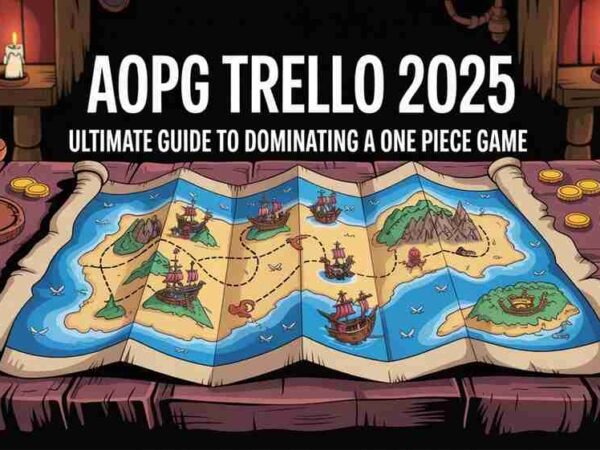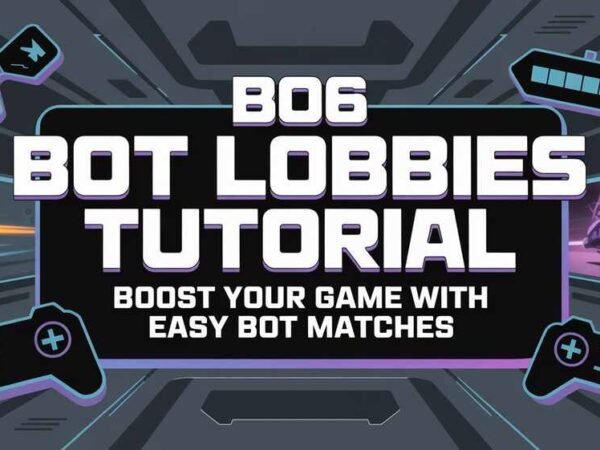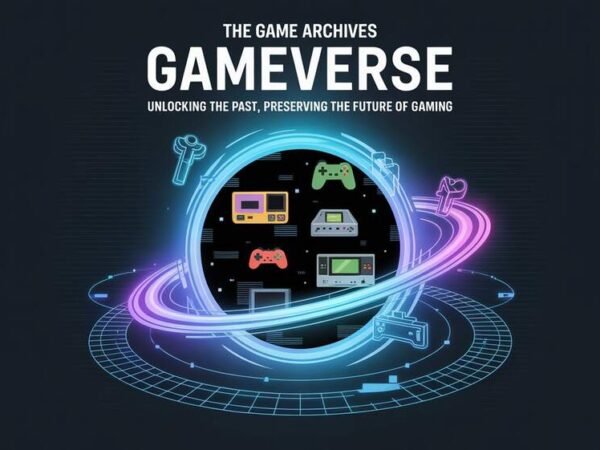Minecraft, a game that has captivated millions worldwide, has seen various iterations since its inception. Minecraft: Bedrock Edition (2011) stands out for its cross-platform play, allowing players from different devices to connect and collaborate seamlessly. Minecraft has evolved, as have the game’s visual elements, particularly the game icons and banners. These seemingly simple visuals significantly shape the game’s identity and experience, contributing to its aesthetic appeal and gameplay mechanics. This article delves into the evolution, customization, and impact of game icons and banners in Minecraft: Bedrock Edition, exploring how these elements have become integral to the Minecraft universe.
Overview of Minecraft: Bedrock Edition (2011)
Minecraft: Bedrock Edition was introduced in 2011 as a version designed to run across multiple platforms, including Windows 10, Xbox, PlayStation, Nintendo Switch, iOS, and Android. Unlike the Java Edition, Bedrock Edition emphasizes accessibility and compatibility, allowing players to enjoy the game together regardless of their device. This cross-platform functionality has been a game-changer, fostering a more inclusive and expansive gaming community.
The Bedrock Edition also distinguishes itself with unique features such as the Marketplace, where players can purchase skins, texture packs, worlds, and Realms, which allows players to create and manage their private multiplayer servers. Regular updates and performance optimizations ensure the game remains engaging and smooth, even as the player base grows. However, beyond these technical aspects, visual elements like game icons and banners have played a crucial role in defining the player experience, offering personalization and creative expression tools.
Evolution of Game Icons and Banners
Early Years (2011-2015)
Minecraft: Bedrock Edition featured a simple yet iconic grass block as its primary game icon in its early years. This symbol quickly became synonymous with the game, representing its core concept of building and exploration. During this period, banners were introduced as functional elements within the game to mark territories or signal specific gameplay features. The early designs were straightforward, focusing more on functionality than aesthetic appeal.
Despite their simplicity, these early icons and banners laid the foundation for Minecraft’s brand identity. The grass block icon, in particular, became a visual shorthand for the game, recognizable even to those who had never played it. Though less prominent, banners started gaining importance as players began using them to personalize their in-game environments, paving the way for more elaborate designs.
Expansion Phase (2016-2018)
As Minecraft’s popularity soared, so did the complexity and variety of its visual elements. The period between 2016 and 2018 saw the introduction of thematic banners that reflected new game updates. For instance, the 2016 aquatic update brought banners featuring underwater motifs, while the 2017 Nether update introduced darker, more intense designs to match the game’s evolving environments.
Icons also evolved during this phase, incorporating more detailed and varied designs. Popular in-game characters, such as the Creeper, began to appear in icons, adding a layer of familiarity and charm. This period has marked a shift towards using icons and banners not just as functional elements but as tools for storytelling and enhancing the game’s visual appeal. Introducing these thematic visuals helped keep the game fresh and exciting, encouraging players to explore new content and engage more deeply with the game world.
Modern Trends (2019-Present)
In recent years, Minecraft: Bedrock Edition has continued to innovate with its game icons and banners, embracing community-driven content and advanced visual techniques. Integrating user-generated content has allowed players to see their creations reflected in the game’s official banners, fostering a sense of community and ownership.
Modern banners often feature complex designs, including animations that add a dynamic element to the game’s visual landscape. The use of advanced graphics techniques has allowed for more intricate and detailed icons and banners, making them not only functional but also visually captivating. For example, banners today might depict scenes from significant updates, such as the Nether Update or the Caves & Cliffs update, showcasing the latest game content in vibrant detail. This blend of official updates and community contributions has ensured Minecraft’s visual elements remain fresh and engaging, catering to long-time fans and new players.
Crafting and Customizing Banners
Basic Banner Crafting
Banners in Minecraft: Bedrock Edition are crafted using six wool blocks and one stick. This simple recipe creates a blank banner that players can customize using a variety of patterns and dyes. The crafting table and loom are essential tools, allowing players to apply different designs and colors to their banners.
The basic crafting process is straightforward, making it accessible even to newer players. However, the real creative potential lies in the customization options that follow. By experimenting with different materials and techniques, players can transform a simple banner into a unique work of art that reflects their style or serves a specific in-game purpose.
Advanced Customization
For those looking to improve their banner designs, Minecraft offers a range of advanced customization options. Players can use dyes to add up to six layers of patterns to a single banner, creating intricate designs that include everything from national flags to personal emblems. The loom is particularly useful in this process, allowing players to preview and select patterns before applying them to the banner.
Popular designs often include recognizable symbols, such as clan logos or even emoji-like faces, which players use to represent their teams or personal brands within the game. The ability to upload custom designs has also opened up new possibilities for creativity, enabling players to bring their digital art into Minecraft. Whether it’s a simple stripe pattern or a complex multi-layered design, the customization options in Minecraft: Bedrock Edition ensure that every banner can be as unique as the player who creates it.
Displaying Banners
Once a banner has been crafted and customized, it can be displayed in various ways within the game. Players can place banners on walls, fences, or stands to decorate their bases, mark essential locations, or create artistic installations. In multiplayer games, banners are beneficial for indicating team bases or signaling strategic points, making them critical for coordination and communication.
Banners can also be attached to shields, allowing players to carry their designs into battle. This feature adds a layer of personalization to combat, enabling players to represent their team or faction while defending their territory. The versatility of banners in Minecraft: Bedrock Edition makes them a valuable asset for both creative expression and practical gameplay.
Impact on Gameplay
Enhancing Visual Appeal
Game icons and banners significantly enhance Minecraft’s visual appeal, making the game world more engaging and immersive. Icons provide clear visual cues, helping players navigate the game’s menus and interfaces, while banners add a layer of personalization to in-game environments. Whether used to decorate a castle, mark a mining outpost, or represent a team in multiplayer, banners contribute to the game’s overall aesthetic, making each world feel unique and customized.
Using banners and icons also allows players to express their creativity, turning their in-game spaces into personalized works of art. This creative freedom is one of Minecraft’s most appealing features, allowing players to build, explore, and shape their game world’s visual identity.
Facilitating Player Interaction
In multiplayer settings, banners are crucial in facilitating player interaction and coordination. By designing and displaying banners, players can quickly identify team bases, mark essential locations, and communicate with other players. This visual communication is precious in large multiplayer servers, where clear indicators can help prevent confusion and enhance the overall gameplay experience.
Custom player icons also contribute to this interaction, allowing players to distinguish themselves in a crowded game environment. Whether through a unique skin or a personalized banner, these visual elements help players establish their identity within the game, fostering community and collaboration.
Community Engagement
Banners and icons are not just tools for individual expression; they also play a significant role in fostering community engagement. Many players share their banner designs with the broader Minecraft community, participating in design challenges or contributing to collaborative projects. This sharing of ideas and creativity helps to strengthen the bonds between players, turning Minecraft into more than just a game; it is a platform for artistic expression and social interaction.
Integrating community-driven content into the game’s official banners also highlights the importance of player contributions in shaping the Minecraft experience. By recognizing and celebrating these contributions, Minecraft’s developers have created a game that is player-friendly and community-oriented.
Best Practices for Designing Icons and Banners
Creative Techniques
When designing icons and banners, it’s essential to experiment with different colors, patterns, and layering techniques. Minecraft’s design tools’ flexibility allows for endless creativity, so players should not be afraid to try new combinations and push the boundaries of what’s possible. Mixing contrasting colors can create vibrant and eye-catching designs, while subtle hues create a more sophisticated and refined look.
Collaborative Design
Collaboration is critical to creating cohesive and impactful designs, especially in multiplayer settings. Working with friends or team members to develop a unified aesthetic for your icons and banners can result in more impressive and functional designs. Sharing ideas, giving feedback, and combining creative strengths can create designs that stand out and serve a functional purpose within the game.
Staying Updated with Trends
It’s essential to stay updated with the latest trends in banner and icon design to stay inspired and keep your designs fresh. Participating in community events and challenges can provide new ideas and techniques while keeping an eye on popular designs can help you incorporate fresh and innovative elements into your creations. Minecraft’s active community is a valuable resource for inspiration, offering a wealth of ideas and feedback to help you take your designs to the next level.
The Future of Icons and Banners in Minecraft
As Minecraft continues to develop, the evolution of game icons and banners will likely reflect broader gaming and digital art trends. Here are some anticipated trends and potential innovations that could shape the future of these essential visual elements in Minecraft: Bedrock Edition.
Anticipated Trends
With each new update, Minecraft introduces fresh content, and the design of game icons and banners will undoubtedly evolve to reflect these changes. One major trend we can anticipate is incorporating more complex and interactive elements into banners. For instance, as the game’s engine continues to improve, we might see the introduction of animated banners or those that change dynamically based on in-game events. This could include banners that alter their appearance depending on the time of day, weather conditions, or player interactions. Such dynamic features would add a new layer of depth to the game, making banners decorative and functional.
Another anticipated trend is the increased personalization and customization of banners and icons. As Minecraft’s player base grows more diverse, there may be a push towards offering more culturally and regionally inspired designs, allowing players from different parts of the world to express their identities through their in-game visuals. Additionally, future updates could include more user-friendly tools for creating and editing icons and banners, enabling players to craft their designs more quickly and intuitively.
Moreover, as Minecraft continues celebrating community achievements and user-generated content, we expect to see more community-inspired banners and icons. The players themselves could design these, vote on them by the community, and then officially integrate them into the game by the developers. This trend would further strengthen the bond between the game and its community, making players feel even more connected to the game world.
Potential for Innovation
There is significant potential for innovation in how banners and icons are used within Minecraft: Bedrock Edition. One of the most exciting possibilities is the integration of interactive or touch-responsive banners. For example, imagine a banner that changes when a player touches or interacts with it somehow. This could open up new gameplay possibilities, such as creating puzzles or secret messages within the game that players must uncover by interacting with these unique banners.
Another area ripe for innovation is the potential integration of augmented reality (AR) and virtual reality (VR) technologies. Minecraft could incorporate these technologies into the design and interaction with icons and banners as they become more mainstream. Players can design and view their banners in a 3D space using VR headsets or AR to project their in-game creations into the real world, blending the digital and physical environments in exciting new ways.
Additionally, as AI technology advances, tools within the game could use AI to assist players in designing more complex and aesthetically pleasing banners. AI could suggest color schemes and patterns or generate new designs based on a player’s input, making the creative process more accessible and engaging for all players, regardless of their artistic skills.
Conclusion
Summary of the Role of Icons and Banners
In Minecraft: Bedrock Edition (2011), game icons and banners are crucial in enhancing the visual appeal and the gameplay experience. They allow players to express their creativity, personalize their environments, and communicate with others in the game. From the early, simple designs to the more intricate and dynamic visuals of today, these elements have evolved alongside the game, becoming an integral part of what makes Minecraft such a unique and engaging experience.
Banners and icons are not merely decorative; they serve as tools for navigation, collaboration, and identity within the game world. As Minecraft continues to grow and evolve, the importance of these visual elements will only increase, offering players new ways to interact with and shape their virtual worlds.
Final Thoughts
As we look to the future, the possibilities for innovation in Minecraft: Bedrock Edition’s icons and banners are vast. Whether through new technologies, increased customization options, or community-driven content, these elements will continue to evolve, reflecting the creativity and diversity of the Minecraft community. Players are encouraged to explore these tools, push the boundaries of what can be created, and make their mark on the ever-expanding world of Minecraft. By embracing the full potential of game icons and banners, players can enhance their gameplay experience and contribute to the ongoing evolution of this beloved game.
Do Read: Sven Coop Game Icons Banners: Design Tips for Enhanced Gameplay












